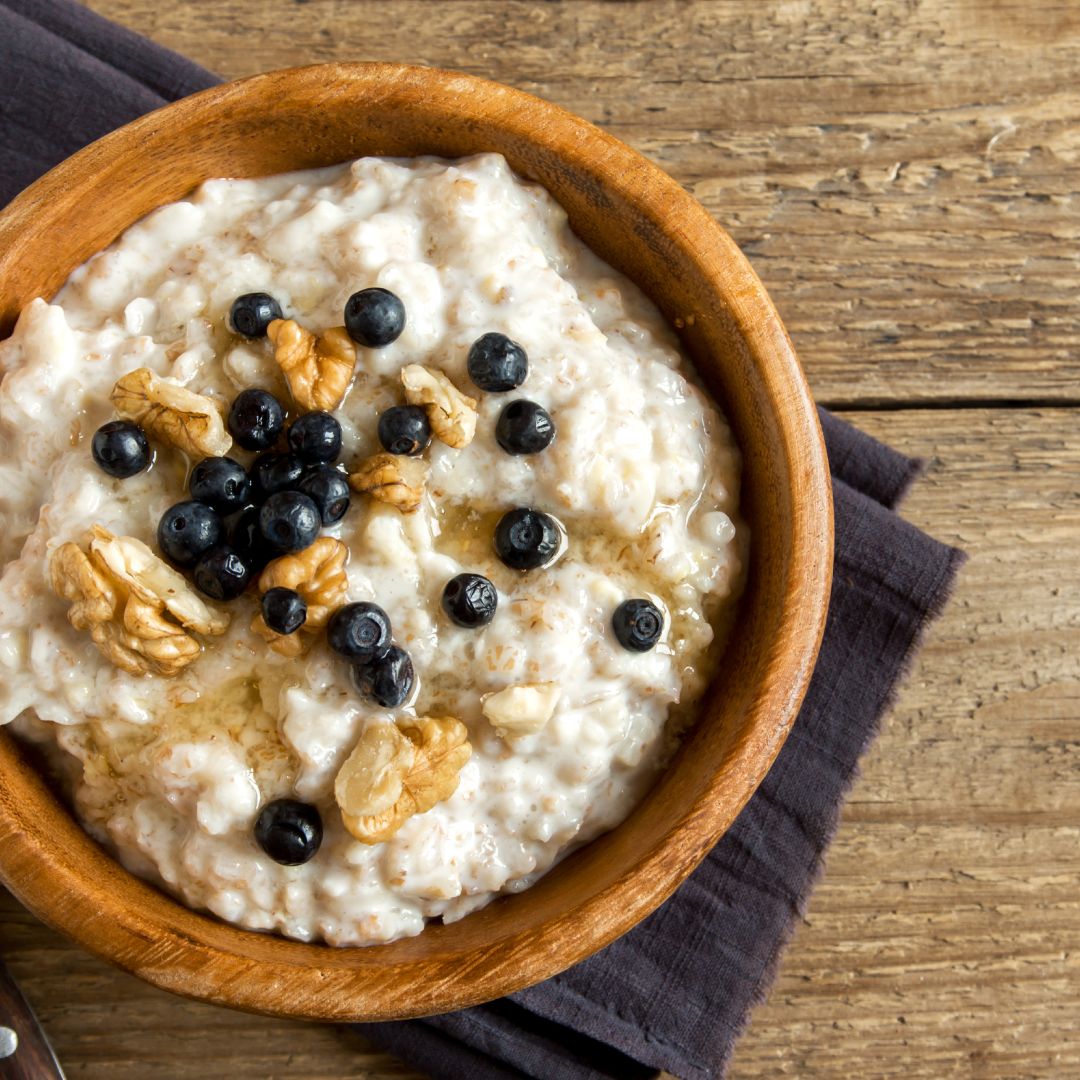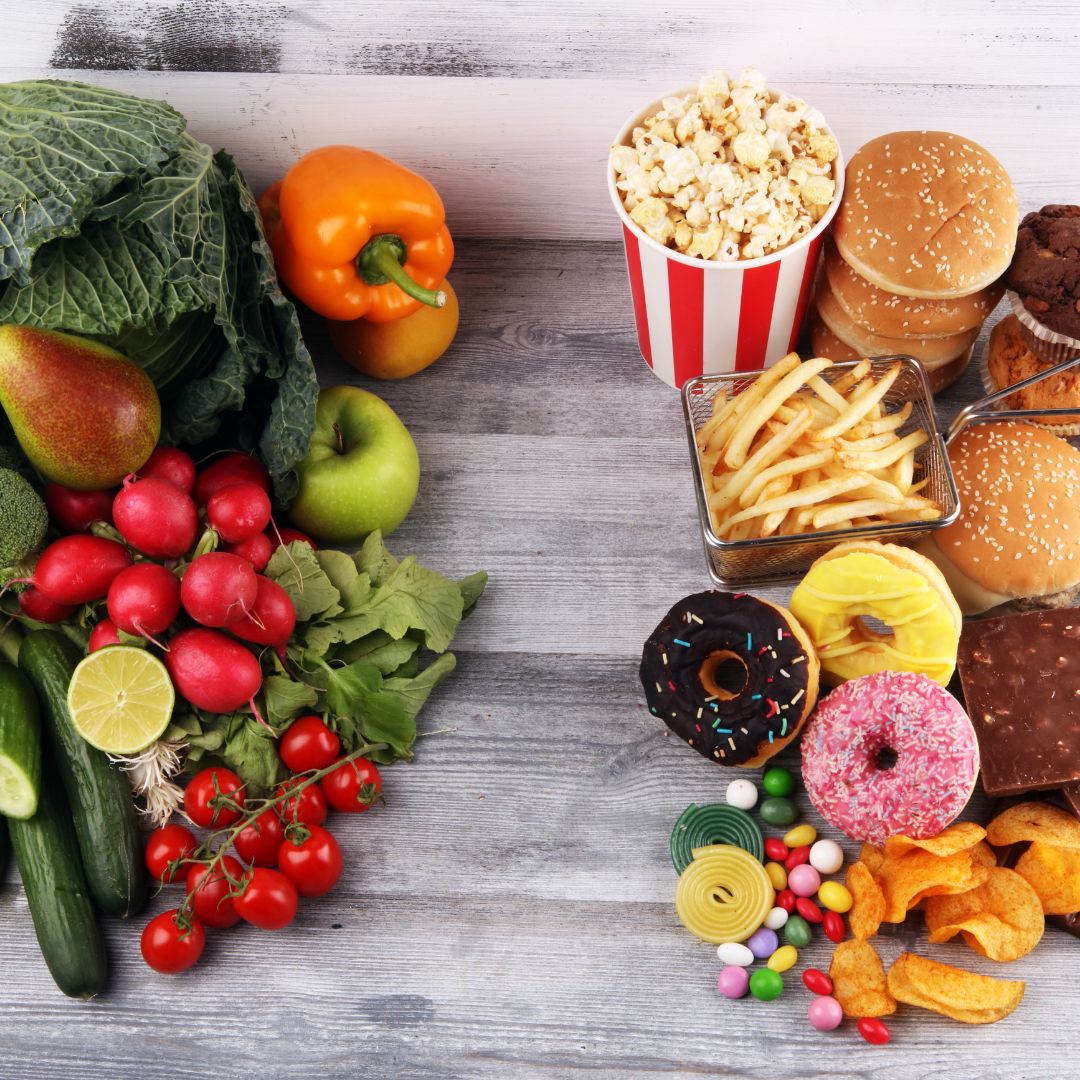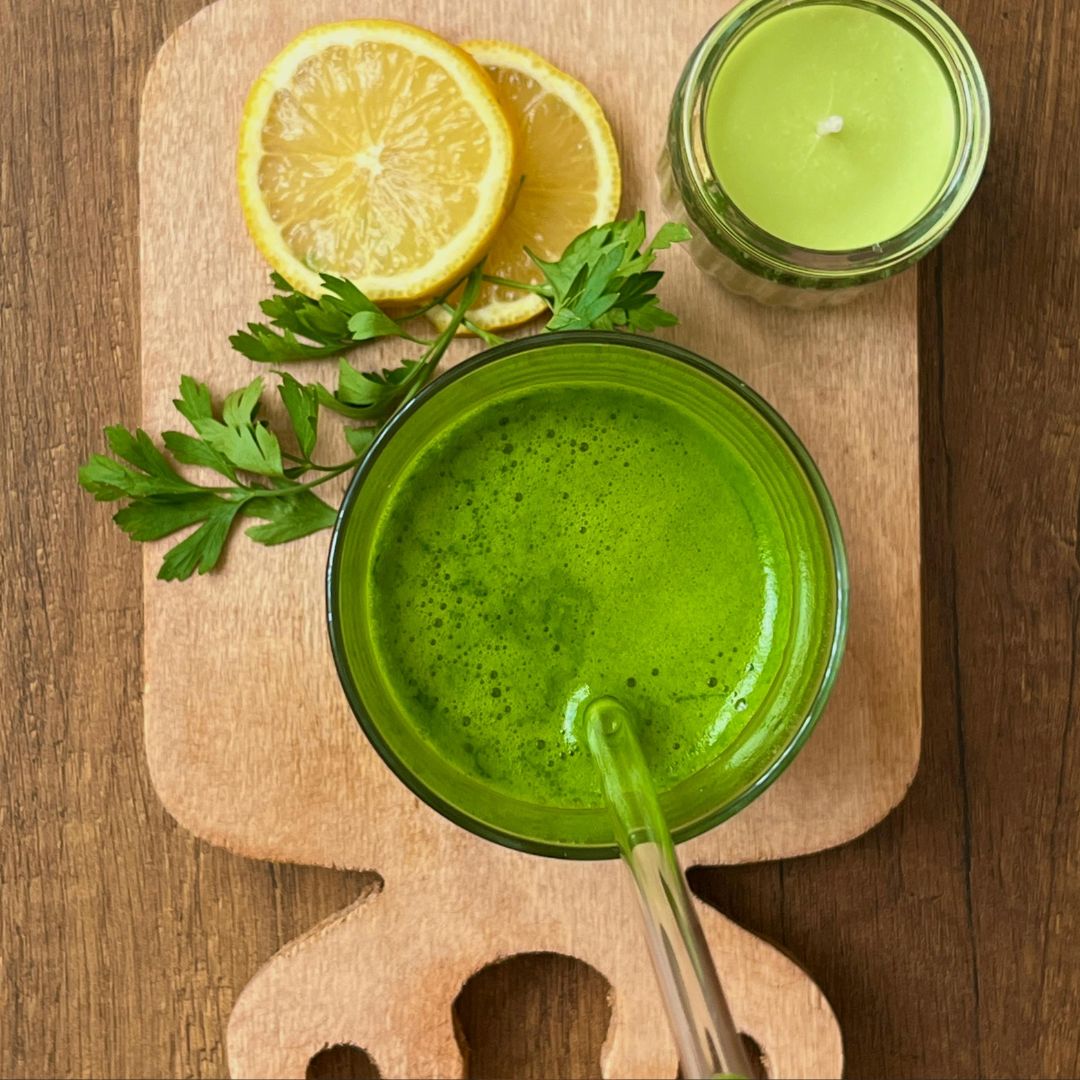
The Power of Small Changes
Many people begin January believing they need major changes to manage PCOS. It is easy to feel pressure to overhaul your whole lifestyle or follow restrictive plans that feel unsustainable. But the truth is that small, consistent actions often make the biggest difference. These gradual steps are easier to maintain and can support more stable energy, steadier appetite and an overall sense of greater control.
The following case studies help to show how simple changes helped three women begin to feel more balanced and confident in their routines. Each story reflects something I see often in practice: real progress begins with changes that fit the individual, rather than trying to force a perfect plan.
Why small changes make the biggest difference
PCOS can feel overwhelming because it touches so many areas of our life. When everything feels so intertwined, it is tempting to think you need a complete and utter reset. Yet research consistently shows that sustainable, moderate lifestyle adjustments can be more impactful than extreme diets or intense exercise plans.
Small changes work because:
These changes accumulate over time, creating momentum that feels manageable rather than stressful. For many women, this gentle approach makes PCOS feel far less intimidating.
Case study 1: Balancing blood sugar
Amira started the year feeling tired most mornings and often found herself searching for snacks by mid-afternoon. She had tried cutting out entire food groups in the past, but nothing seemed to stick. Instead of another strict plan, she chose one simple goal. She added protein to her breakfast each day.
She began making a balanced morning meal with oats, seeds, berries and a good source of protein. After a few weeks, she noticed she felt fuller for longer and more stable through the morning. Her energy was more consistent, and she felt more confident approaching the rest of her meals with the same balanced mindset.
A single daily habit had a ripple effect on her routine, making eating feel calmer and more predictable.
Case study 2: Adding movement gradually
Claire wanted to exercise more but felt overwhelmed by the idea of committing to long workouts. In the past, she would start an ambitious routine, stick with it for a week or two, then stop when life became busy or she didn’t have the energy to continue such a massive plan.
This time she focused on one achievable goal. She added a 10-minute walk after lunch on weekdays. It felt manageable and didn’t require any special planning. As her confidence grew, she extended a couple of walks and added gentle strength work twice a week.
Within a month, movement felt less like a chore and more like a positive part of her day. The steady routine supported her mood, energy and sense of wellbeing without the pressure of a strict programme.
Case study 3: Supporting gut health
Sofia had always struggled with digestive discomfort, which often left her feeling bloated and unsure about which foods worked best for her. Instead of cutting out several foods at once, she explored adding more fibre in a gentle, consistent way.
She began by including a portion of vegetables with lunch and dinner, then added ground flaxseed to her breakfast a few mornings a week. After a few weeks her digestion felt more regular, mealtimes felt easier and she had a clearer sense of what supported her body.
Supporting gut health did not require a major overhaul. Small additions created meaningful progress.
What you can take from these stories
Each of these women started with just one change. None of them relied on strict rules or dramatic plans. They each chose something realistic, repeatable and supportive of their goals.
You might begin by:
The most effective approach is the one that feels manageable for you. Progress with PCOS rarely comes from perfection. It comes from steady steps that you can keep returning to, even during busy or stressful times.
If you feel unsure about where to begin, you are not alone. A personalised plan that fits your lifestyle can make the process feel far more achievable and grounding. You don’t need drastic changes, just the right ones. Book a free call with us to see how you could start your own PCOS progress story.

PCOS Power Porridge
A warm bowl of porridge can feel grounding and comforting on cold winter mornings, especially when the weather is icy and you need something nourishing before the day gets busy. For many people with PCOS, starting the day with a balanced breakfast that combines protein, fibre and healthy fats can help support steadier energy and appetite through the morning.
Traditional porridge made only with oats can sometimes lead to a sharper rise in blood sugar. This PCOS Power Porridge is a more balanced version that blends oats with flaxseed, chia and hemp seeds for added fibre and texture. It also includes a protein option that brings the meal to at least 30 g protein, which can help support fullness and reduce the likelihood of mid-morning energy dips.
Why this porridge works well for PCOS
Oats are naturally rich in beta glucans, a type of soluble fibre that slows digestion and supports a more gradual rise in blood glucose. When paired with additional fibre from seeds, healthy fats from nuts and a meaningful amount of protein, they create a breakfast that helps keep you satisfied and energised for longer.
For people managing PCOS, meals that combine fibre and protein can support more stable hunger patterns and make it easier to maintain balanced eating through the day. This recipe provides more than 10 g fibre and more than 30 g protein, all in a warm and comforting bowl.
Serves: 1
Dry ingredients
Protein options (choose one)
All options bring the recipe to at least 30 g protein.
Option A: Balanced and best tasting
Option B: Higher protein, no yoghurt
Option C: No protein powder
Liquid
Toppings
Method
Flavour variations
Blueberry and Lemon
Stir through frozen blueberries while cooking and finish with lemon zest.
Cocoa and Almond
Add a teaspoon of cocoa powder before cooking and top with chopped almonds.
Ginger and Pear
Add chopped pear and a little ground ginger for a warming winter flavour.
Serving suggestions and storage tips
Make ahead
Combine the dry ingredients in a jar so breakfast is quick to prepare on busy mornings.
Storage
Cooked porridge keeps for up to two days in the fridge. Add a splash of liquid when reheating.

My Top 5 Easy Food Swaps
January often brings so much pressure to overhaul everything all at once. Many of us feel pulled towards strict plans or quick fixes, especially after a busy – and heavy! - December. But the problem is that those restrictive diets rarely last long, and then often leave us feeling hungry, tired and frustrated. And there is soooo much targeted at people with PCOS – it can feel overwhelming.
Gentle food swaps offer a different way forward. They are easy changes that can support better energy, steadier appetite, and a more nourishing routine without cutting out entire food groups. These small changes can help you feel nourished rather than deprived. Plus, they are far easier to maintain in the long term.
Why Gentle Swaps Work Better than Diets
Research shows that nutrition habits that last tend to come from gradual changes rather than all-or-nothing rules. When you focus on adding nourishing foods rather than removing everything you enjoy, your meals feel satisfying and your blood sugar and energy levels often benefit.
Gentle swaps support your metabolism by increasing the amount of fibre, protein or healthy fats in your meals. These nutrients help with satiety, stabilise blood sugar and support digestive health. Over time these small choices add up and create a meaningful shift in how you feel day to day.
They also reduce the sense of pressure that often leads to diet fatigue. By making manageable changes at your own pace, it becomes easier to build confidence and consistency.
5 Practical Food Swaps for Everyday Meals
These swaps are simple, realistic and easy to put into action.
1. Swap toast for a protein-based option such as oatcakes with cottage cheese or eggs with veggies
This reduces reliance on fast-releasing carbohydrates and increases protein and fibre which help keep blood sugar steadier. Oatcakes, cottage cheese and eggs all offer slow and sustained energy while still feeling satisfying and comforting.
2. Swap sugary breakfast cereals for a protein rich start
Many cereals create a quick rise in blood sugar followed by a mid-morning slump. Choosing Greek yoghurt with nuts and seeds, eggs, if tolerated, or a warm porridge with added protein can keep you energised and satisfied (see this month’s Power Porridge recipe)
3. Swap creamy sauces for yoghurt based or olive oil dressings
Plain yoghurt, tahini and olive oil provide a creamy texture with more protein or healthy fats and usually less added sugar. These options help support balanced meals and provide a gentler release of energy.
4. Swap crisps or biscuits for balanced snacks
If you need a snack, choose options that pair protein and fibre. Think snacks like hummus with vegetables, nuts with fruit, or Greek yoghurt with berries. These combinations support fullness and reduce cravings without feeling restrictive.
5. Swap processed meats for lean or plant-based proteins
Choosing fish, poultry, tofu, tempeh or beans if tolerated can provide higher quality protein and more fibre or omega 3 fats. These foods support metabolic health and promote a steadier release of energy throughout the day.
Breakfast Upgrade Ideas
If your breakfast is an area that you’d like to refresh, try one of the following:
• Power porridge with chia and flaxseeds, and protein powder
• Greek yoghurt with berries, nuts and seeds
• A vegetable packed omelette or tofu scramble
• Oatcakes topped with nut butter and sliced fruit
Each of these options supports more balanced blood sugar responses which can help reduce mid-morning cravings.
If you want support creating realistic habits that feel good and last beyond January, why not book a free call to see how nutritional therapy could help you feel more energised and confident with your eating.

Why Detox Diets Don’t Work for PCOS
What are detox diets?
January often brings a wave of “detox” plans that promise a reset after the festive season. These diets usually involve cutting out major food groups, drinking juices or smoothies in place of meals, or following stupidly strict rules for a short period of time. They’re often marketed as a way to “cleanse” the body, balance hormones or kickstart weight loss.
For someone living with PCOS, these messages can feel especially tempting. When symptoms feel unpredictable or you’ve tried countless plans without lasting change, the idea of a quick fix can feel hopeful.
But while detox diets are persuasive, the evidence behind them is very limited. And for many people with PCOS, they may do more harm than good.
Why detoxes don’t work for PCOS
The idea that the body needs an external detox is not supported by research. If your liver, kidneys and digestive system are functioning normally, they’re already working continuously to break down and remove toxins without the need for special diets or supplements.
There’s also no reliable evidence showing that detox diets improve key PCOS concerns such as insulin resistance, androgen levels, ovulation or inflammation. Some detox products can even be problematic, with reports of liver stress linked to certain herbal cleanse supplements.
What’s more, many detoxes rely on severe restriction. They may lead to rapid short-term changes on the scales, but they don’t address the metabolic drivers of PCOS and don’t support long-term hormone balance. This often leaves people feeling like they’ve “failed” another plan when, in reality, it was never designed for sustainable success in the first place.
The impact of restriction on hormones and metabolism
Most clients I work with have been told at some point that they need to be stricter or try harder, that it’s their fault they’re in the position they are. Yet restrictive diets massively place the body under additional stress. For example:
For people with PCOS, whose bodies may already be working against insulin resistance or inflammation, this kind of disruption can feel especially challenging.
Many women tell me they blame themselves when a restrictive plan isn’t sustainable. But the issue isn’t you. It’s the approach. Restriction may work temporarily, but it isn’t a long-term strategy for supporting hormones, metabolism or overall wellbeing.
What actually supports detoxification in the body
Although detox diets aren’t necessary, we can support the body’s natural detoxification pathways through balanced, consistent habits. These are gentle, realistic shifts rather than extremes.
Examples include:
These everyday foundations create a more stable internal environment for hormone regulation than any short-term cleanse.
Better long-term strategies for PCOS
Most people with PCOS don’t need another rigid diet. They need clarity, reassurance and a plan that feels doable even on the busiest weeks. Long-term progress comes from repeatable habits, not restriction.
Sustainable strategies include:
And importantly, working with your body rather than fighting against it.
You’re not expected to figure all this out alone. Many people come to me feeling overwhelmed or frustrated after trying countless plans. Once we simplify things and build a strategy that suits their life, the process becomes far more manageable and far less stressful.
If detox diets have left you feeling discouraged in the past, please know that it’s not a lack of willpower. It’s simply that restrictive approaches aren’t designed for long-term success in PCOS. Small, consistent habits are far more powerful. And if you’re ready to move beyond quick fixes? Why not book a free consultation with us, where we can look at how to build a sustainable PCOS plan that works for you.

Warming Turmeric and Ginger Winter Tea
Turmeric and ginger have a long history of use in traditional cooking and herbal practices, but they also have a growing body of research supporting their role in inflammation, immunity and metabolic health.
Turmeric contains curcumin, a natural compound studied for its anti-inflammatory and antioxidant effects. Ginger contains gingerols and shogaols, which support digestion, circulation and immune balance.
For women with PCOS this combination can be particularly supportive. Chronic low-grade inflammation is a common feature of PCOS, and warming ingredients like turmeric and ginger may help calm inflammatory pathways while supporting winter immunity. Their gentle effects on digestion can also be helpful during colder months when heavier meals are more common.
This simple winter tea is an easy way to enjoy these benefits in a soothing, daily ritual.
Key ingredients for PCOS health
This recipe uses everyday ingredients that offer natural support for inflammation, hormone balance and immunity.
Fresh ginger
Supports digestion and may help regulate inflammation. It also adds gentle heat that feels comforting on winter days.
Ground or fresh turmeric
Provides curcumin, known for its antioxidant and anti-inflammatory effects. When combined with black pepper, absorption improves.
Lemon
Adds vitamin C and a fresh flavour. Vitamin C contributes to normal immune function.
Honey (optional)
Offers natural sweetness and antioxidants. A very small amount can make the tea more comforting without overwhelming blood sugar.
Black pepper
Enhances the absorption of curcumin and brings warmth to the drink.
These ingredients can be adjusted based on your taste and tolerance.
Ingredients:
Serves: 2
Method:
The result is a soothing golden tea that feels grounding, warming and supportive during the colder months.
Tips for making ahead and freezing
This recipe is easy to make in larger batches and store for later use.
This tea makes a nourishing addition to winter self-care and can complement your wider anti-inflammatory and PCOS-supportive habits.

Top Tips to Support PCOS this Winter
Why winter can trigger inflammation and flare-ups
Winter often brings a noticeable shift in energy, cravings and symptoms. Darker days, colder weather and changes in routine all influence how the body regulates inflammation. People commonly experience more colds, more fatigue and more reliance on comfort foods during this time, which can place additional pressure on metabolic health.
For those with PCOS, these changes can feel particularly challenging. PCOS is closely linked with chronic low-grade inflammation. Winter may amplify this due to lower vitamin D, disrupted sleep, reduced movement and a tendency toward richer foods. This can lead to more fatigue, skin flare-ups, cravings, mood changes and slower recovery from illness.
The positive news is that simple, sustainable habits can make a meaningful difference to how your body handles winter.
Tip 1: Focus on anti-inflammatory foods
Nutrition is one of the most effective ways to support inflammation. Many whole foods contain natural compounds that help regulate immune responses, stabilise blood sugar and support hormone balance.
Here are some foods with well-researched anti-inflammatory properties:
Turmeric: Contains curcumin, shown to support inflammatory regulation. Add it to soups, stews, curries or warm drinks. Black pepper enhances absorption.
Ginger: Supports digestion and may help manage inflammation. Fresh ginger works well in teas, stir-fries, porridge and broths.
Berries: Rich in polyphenols that help moderate inflammation. Frozen berries are ideal for winter and easy to add to porridge or yoghurt.
Leafy green vegetables: Kale, spinach, cabbage and cavolo nero provide antioxidants, magnesium and fibre which all support immune and metabolic health.
Extra virgin olive oil: A key feature of traditional Mediterranean diets, associated with lower inflammatory markers. Drizzle on salads, vegetables or soups.
Garlic and onions: Contain prebiotic fibres and sulphur compounds that support a balanced gut microbiome, which influences inflammation.
Oily fish: Salmon, sardines, mackerel and herring provide omega 3 fatty acids that support inflammatory balance and cardiovascular health.
Herbs and spices: Cinnamon, rosemary, thyme and oregano offer antioxidant support and add flavour to winter meals.
Warming soups, stews, tray bakes and slow-cooked dishes make it easy to include these ingredients regularly.
Tip 2: Balance blood sugar with warming meals
Large spikes in blood sugar can increase inflammation and lead to energy crashes, cravings and hormonal fluctuations. Winter comfort eating often involves sugary snacks and refined carbohydrates that contribute to these patterns.
Balancing meals helps create steady energy. A useful approach is to include:
Meals such as lentil soup, roasted vegetables with salmon, turkey chilli, or quinoa tofu bowls with winter greens can provide warmth and stability throughout the day.
Tip 3: Prioritise rest and sleep
Sleep has a powerful influence on inflammation. Winter often disrupts sleep patterns due to darker mornings, reduced daylight exposure and seasonal stress.
Low-quality sleep can affect blood sugar control, hunger hormones and mood, all of which are closely connected to PCOS.
Helpful habits include a consistent sleep and wake routine, reduced screen use in the evening and getting outside for daylight exposure when possible. Many people find that improving sleep quality significantly boosts their winter wellbeing.
Tip 4: Gentle movement over pushing too hard
Movement helps regulate inflammation, supports insulin sensitivity and improves mood. During winter it can be tempting to skip exercise or, at the other extreme, push harder to counterbalance food choices.
Gentle, consistent movement is often more supportive. Activities such as walking, yoga, pilates, swimming or light strength training can be enough to improve metabolic health without overwhelming the body. Regular movement also supports immune resilience and emotional wellbeing.
Tip 5: Gut health support in winter
Gut health plays a key role in inflammation, immunity and hormone regulation. Winter routines can affect digestion, microbiome diversity and bowel habits. Supporting your gut can therefore improve resilience during colder months.
Aim to include fibre rich vegetables, fermented foods such as kefir, sauerkraut or live yoghurt, and prebiotic foods like oats, garlic, onions and flaxseed. These support beneficial gut bacteria and help maintain a healthy gut barrier.
If digestive symptoms such as bloating, irregular stools or reflux are frequent, it may indicate underlying imbalances such as dysbiosis or SIBO. Supporting the gut often improves inflammation, energy and hormonal symptoms. Check my gut health blog here.
Bringing it all together
Winter can be a challenging season for many of us managing PCOS. The combination of reduced daylight, colder weather, disrupted routines and dietary changes places extra strain on the body. Small, consistent habits can make a noticeable difference to inflammation, mood and metabolic balance.
Including nutrient dense foods, balancing blood sugar, improving sleep, staying gently active and supporting gut health all help your body feel more resilient in winter. These changes do not need to be complicated or restrictive. Even a few simple adjustments can help reduce flare-ups, stabilise energy and support your overall wellbeing.
If you notice that winter always leaves you feeling more tired, inflamed or out of balance, now is the ideal moment to take supportive action.
If you feel ready to support your hormones, inflammation and winter wellbeing more deeply, help is available. Why not get in touch?